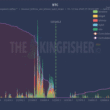The Swiss National Bank has slashed its interest rates back to zero, signaling a return to ultra-accommodative monetary policy as economic pressures mount across Europe and beyond. This move could hold significant implications for bitcoin and global financial markets.
Switzerland Resumes Zero Interest Policy Amid Global Trade Risks
In a decisive step to bolster its economy, the Swiss National Bank (SNB) announced a reduction of its benchmark interest rate to zero this week. This marks the sixth consecutive rate cut by the SNB since March 2024, a strategy designed to mitigate persistent deflationary pressures, manage a strengthening Swiss franc, and navigate challenges stemming from escalating global trade tensions.
COVID-Era Monetary Policy Makes a Comeback
The return to a zero interest rate policy (ZIRP) mirrors playbooks from the height of the COVID-19 pandemic, when central banks around the world slashed borrowing costs to historic lows to stimulate growth. Switzerland’s latest move underscores renewed concerns over falling inflation rates and the ripple effects of tariffs targeting countries with sizable trade surpluses, like Switzerland and China. Economic uncertainty exacerbated by international trade disputes—particularly heightened under U.S. trade policy shifts—has prompted the SNB to pursue aggressive monetary easing once again.
Key Stats & Figures
- Interest Rate Level: SNB cuts policy rate to 0%, marking the first return to zero since pre-pandemic stimulus measures.
- Number of Consecutive Rate Cuts: Six straight reductions since March 2024.
- Currency Impact: Swiss franc has appreciated significantly in 2024, creating hurdles for Swiss exporters.
- Policy Motivation: Falling inflation and economic uncertainties due to global trade tensions and tariffs.
How Lower Rates Could Fuel Bitcoin’s Next Rally
The SNB’s pivot back to zero rates may prove influential beyond Switzerland’s borders. Should more advanced economies embrace similar approaches, it could result in favorable conditions for risk assets such as bitcoin. Ultra-low or zero interest rates tend to drive investors toward alternative assets, as traditional savings and bonds offer diminished returns. In previous cycles, similar monetary policies contributed to bullish momentum across equity and crypto markets, providing both liquidity and risk appetite to market participants.
Conclusion: What This Means for the Market
Switzerland’s renewed zero rate era could foreshadow a wider shift among central banks globally, with significant consequences for investors and digital assets. If ZIRP returns on a broad scale, bitcoin and related cryptocurrencies may find renewed favor as investors search for yield and diversification amidst subdued traditional market performance.
